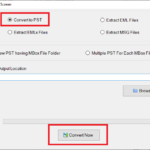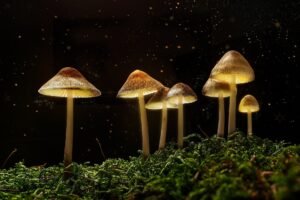Unveiling the Mysteries: Magic Mushrooms and the Rise of Psilocybin Therapy
Magic mushrooms, also known as psilocybin mushrooms, have captivated human curiosity for centuries. These fungi contain the psychoactive compound psilocybin, which alters perception and can induce profound psychological experiences. In recent years, magic mushrooms have garnered renewed attention due to their potential therapeutic applications. This article delves into the world of magic mushrooms, exploring their history, effects, and the burgeoning field of psilocybin therapy.
A Journey Through Time: The History of Magic Mushrooms
The use of magic mushrooms stretches far back in human history. Archaeological evidence suggests their use in religious ceremonies in Mesoamerica as early as 1000 BC. Sculptures and depictions in Aztec codices point towards their ritualistic significance. Across the globe, magic mushrooms have been documented in various cultures, from Siberia to Africa, used for spiritual and medicinal purposes.
The modern understanding of magic mushrooms began in the mid-20th century. Mycologist R. Gordon Wasson and his wife, Valentina Pavlovna, participated in a Mazatec mushroom ceremony in Mexico in 1955, sparking widespread scientific interest. Albert Hofmann, a Swiss chemist, later isolated psilocybin, the primary psychoactive compound in magic mushrooms.
However, the 1960s counterculture movement led to increased recreational use of magic mushrooms, prompting their classification as a Schedule I drug in the United States in 1970. This categorization placed them among drugs with “high potential for abuse” and “no currently accepted medical use in treatment in the United States.” Research into the therapeutic potential of psilocybin was largely halted for several decades.
Unveiling the Effects: A Look at the Magic Mushroom Experience
Psilocybin alters perception and cognition in various ways. Common effects include:
- Visual alterations: Seeing geometric patterns, enhanced colors, and distortions in perception.
- Altered sense of self: Feeling a sense of oneness with the universe or a dissolution of the ego boundaries.
- Increased emotional intensity: Experiencing heightened joy, fear, sadness, or other emotions.
- Synesthesia: Blending of senses, such as hearing colors or seeing sounds.
The specific effects of a magic mushroom experience vary greatly and depend on factors like:
- Dosage: Higher doses typically lead to more intense experiences.
- Set: The user’s mindset and expectations going into the experience.
- Setting: The physical and social environment where the experience takes place.
While magic mushrooms can induce profound and even mystical experiences, it’s important to remember that they are also hallucinogenic drugs. Unpleasant or frightening experiences, known as “bad trips,” can occur, particularly in an unprepared setting or with high doses.
The Dawn of a New Era: Psilocybin Therapy and its Potential
Despite the historical restrictions, recent years have witnessed a resurgence of research into psilocybin and its therapeutic potential. Clinical trials have shown promising results for psilocybin therapy in treating conditions like:
- Depression: Studies suggest psilocybin-assisted therapy can lead to significant and long-lasting reductions in depressive symptoms.
- Anxiety: Research shows psilocybin therapy may be effective in treating anxiety disorders like end-of-life anxiety in terminally ill patients.
- Addiction: Preliminary research indicates psilocybin therapy can help people break free from addictive patterns.
- Obsessive-compulsive disorder (OCD): Trials have shown promising results in treating OCD symptoms.
- Post-traumatic stress disorder (PTSD): Studies suggest psilocybin therapy can be beneficial in reducing PTSD symptoms.
The mechanism of action for psilocybin therapy is not fully understood, but it’s believed to involve its interaction with the brain’s serotonin system. Psilocybin may induce a state of increased neuroplasticity, allowing for the formation of new neural pathways and a shift in negative thought patterns.
Psilocybin therapy typically involves multiple sessions with a trained therapist in a controlled setting. These sessions provide a safe and supportive environment for patients to explore their emotions and thought patterns under the influence of psilocybin therapy is promising.
The Road Ahead: Considerations and Future Directions
While the research on psilocybin therapy is promising, it’s still in its early stages. More research is needed to fully understand its long-term effects and efficacy for various conditions. Additionally, psilocybin therapy is not a one-size-fits-all solution and may not be suitable for every one.
Conclusion: Unveiling a New Dawn in Mental Health
Promising results suggest psilocybin can hold the key to unlocking relief for individuals struggling with depression, anxiety, addiction, and other disorders. Its ability to facilitate profound psychological experiences coupled with its potential to promote neuroplasticity offers unique approach to healing.



































![Detailed Guide to Yamunotri: The First Dham [Complete Travel Guide] 34 Detailed Guide to Yamunotri: The First Dham [Complete Travel Guide]](https://guest-post.org/wp-content/uploads/2024/07/Char-Dham-150x150.png)










